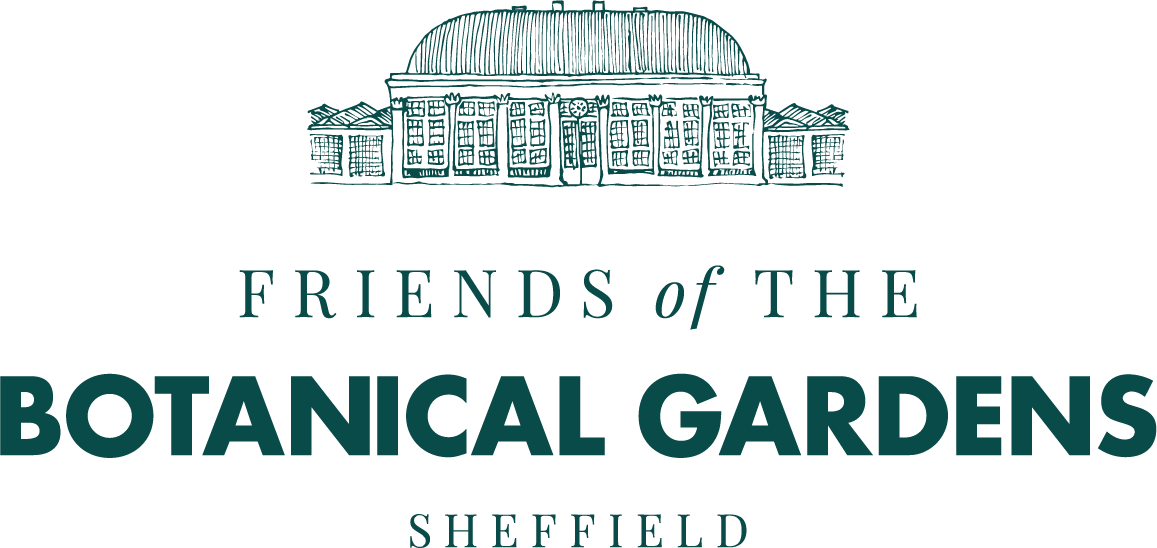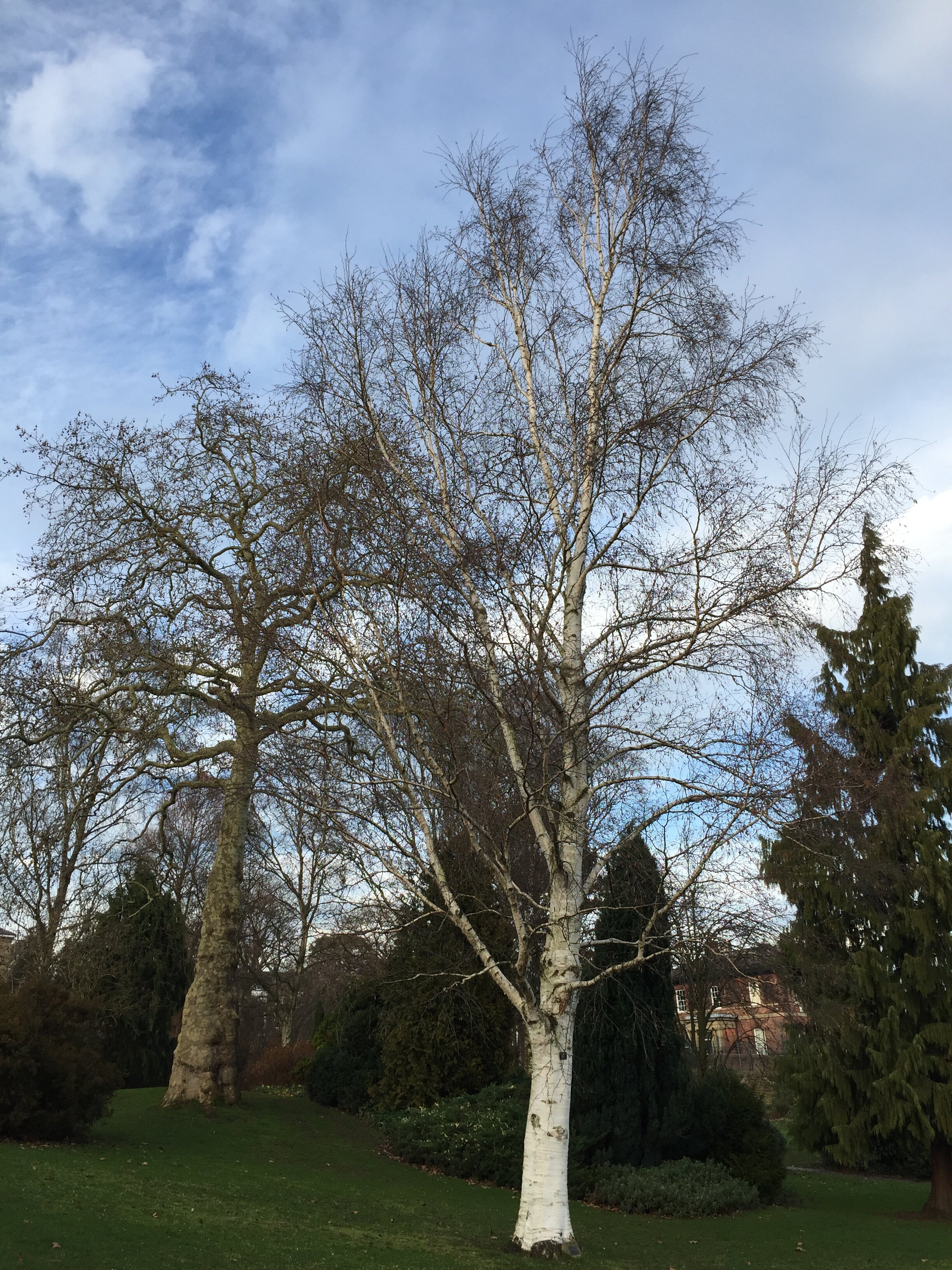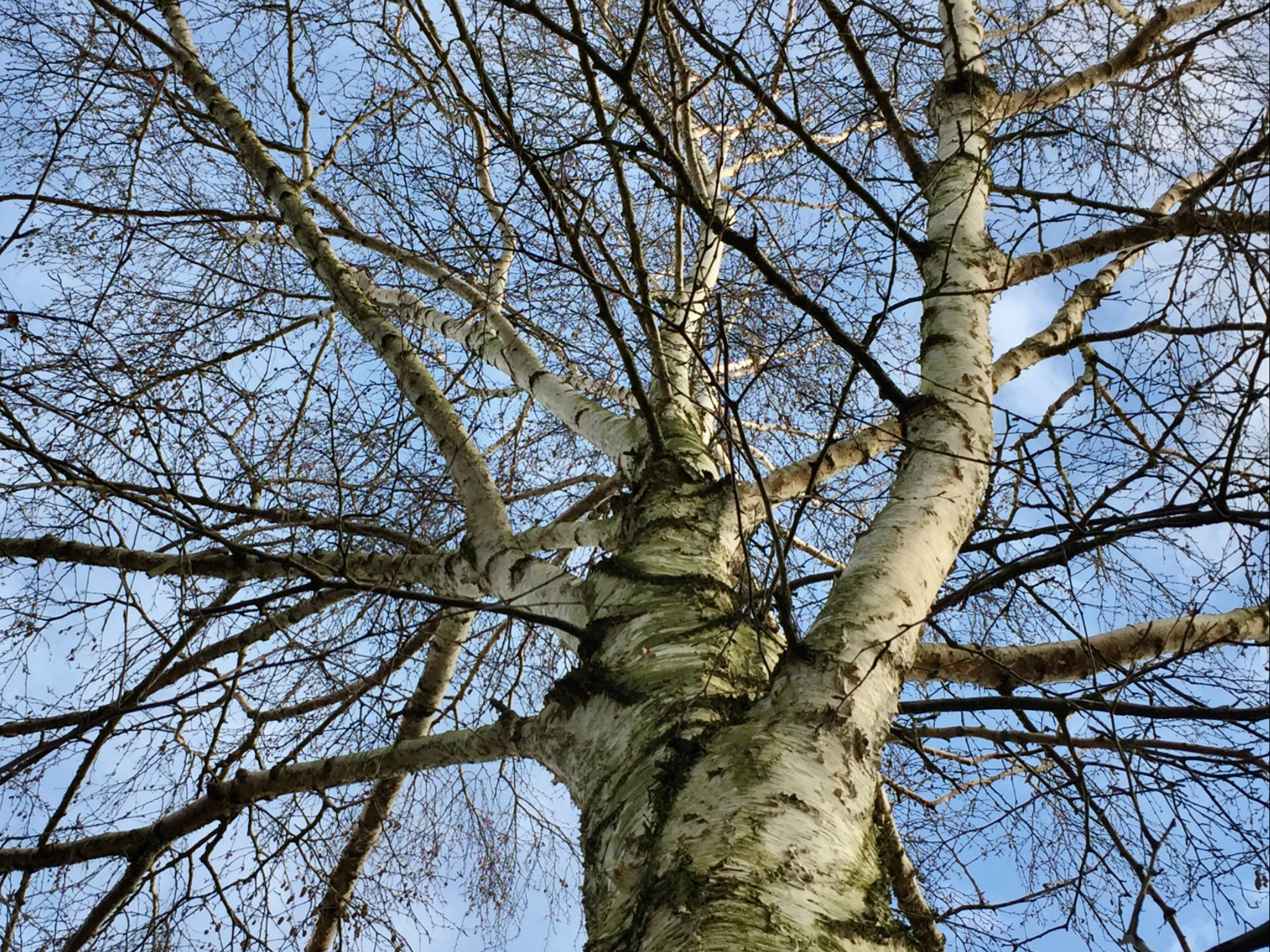Betula utilis var. jacquemontii
Jacquemont's birch has a presence year round on the lawn of the Rock and Water Garden (Area H), its gleaming white bark visible from all around. B. utilis, Himalayan birch, was found by Nathaniel Wallich, Director of the Botanic Gardens of Calcutta, in the early 19th century, and introduced by Hooker in 1849. Its name, meaning 'useful', refers to its many uses including for roofing and as paper from the bark which peels in strips. Ancient Buddhist manuscripts have been found on its bark.
Along the Himalayan mountain chain there are many variants of the birch with different coloured barks, from cream, rose and orange (B. utilis and var. utilis), dark purple (var. prattii) and pure white (var. jacquemontii). This latter has been known in cultivation since 1880. It was named in honour of the celebrated French scientist, Venceslas Jacquemont, who died in India aged 31.


